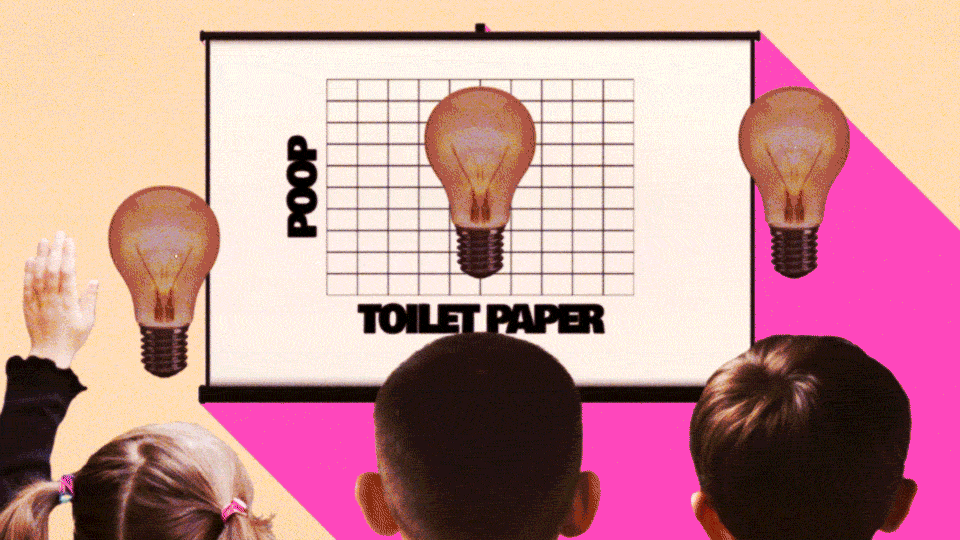My kid is potty trained. Why am I still wiping his butt?

Congratulations. After ample "commando" time, 937 readings of Potty Time with Elmo and more accidents than you care to remember, your child has been successfully potty trained. So why, you may be asking yourself, are you still having to wipe their butt after a trip to the toilet?
According to Allison Jandu, owner and founder of Potty Training Consultant, learning to wipe is one of the final steps of potty training. It’s also one of the most vital, because it’s important that your kiddo practices good hygiene and stays clean after a poop or pee. Wiping is a skill that will help your child use the bathroom independently, particularly at school, thus freeing you or their teacher from having to do the dirty work.
Even kids who are potty trained and mostly accident-free may struggle to master wiping thoroughly, however. Here's some advice to help it stick (or, rather, not stick.)
Teach kids how to wipe in general
Start by talking to your child about what the wiping motion is and what it looks like, outside of the bathroom setting. Kim Lippy, founder of The Pottys, suggests showing him or her how to wipe down a surface (say, a kitchen counter) with a cloth. Once they've gotten the gist, introduce stickier substances to wipe away, which is good practice for eventually trying to clear up poop.
"Put toothpaste or peanut butter on a plastic plate and ask them to wipe it off using some toilet paper,” says Lippy. “This will help your child understand how much pressure to apply to remove the paste, and how many times it needs to be wiped clean.”
Once they understand the type of pressure that’s necessary to wipe, Lippy recommends taking it to the next level by applying toothpaste or peanut butter to a plastic doll’s bottom and beginning to introduce your child to the idea of pooping and wiping a bottom clean.
Demonstrate the front-to-back motion
There is a wrong way to wipe, however. Wiping back to front isn't just messy; it also spreads bacteria, potentially paving the way for a urinary tract infection if they have a vulva.
“Front to back is critical for good hygiene, so it's important to instill that habit early,” says Jandu. She points out that because of their size and proportions, small children may struggle to reach around to wipe properly while keeping themselves steady on the potty. If your child is on the small side and can't reach back all the way, they may need extra assistance.
To demonstrate how to wipe front-to-back, Lippy suggests blowing up two balloons and tying them to the back of a small chair. Using toilet paper, teach your child how to wipe in the middle of two balloons, wiping upwards from front to back.
Make sure they're getting it all
Your child might assume that after one swipe everything is clean and they are ready to go. However, that’s rarely the case, and you’ll want to “start to show your child the process of wiping, folding, wiping, folding toilet paper until they don’t see anything left on the paper,” says Lippy.
At the beginning, this may be difficult for some children, so you’ll want to step in and make sure they haven't missed anything.
“Children should still call for their parents to check to make sure they are cleaned well for the first several weeks,” says Samantha Lambros, a behavior and potty training consultant.
Start with wipes and then transition to toilet paper
To make it easier for your kiddo, Jandu recommends using wet wipes when they’re just starting to wipe and then transitioning to regular toilet paper. Wet wipes tend to provide a cleaner, smoother experience, and create less waste when compared to the mile-long stream of TP that inevitably occurs when a tot is left alone with a roll of Charmin.
With wipes, you’ll want to make sure to teach your child not to flush them down the toilet, but instead throw them in the garbage. For dry toilet paper, Lambros adds that you’ll want to make sure it doesn’t rip easily and is better quality to make the process easier. In short: This calls for two-ply.
Stay calm and collected even when it gets messy
Potty training can be difficult and sometimes (OK, almost always) messy, but staying calm will make it a more positive experience for both you and the child.
“We don't want kids becoming averse to pooping because we freaked them out too much about poop getting on their hands,” says Jandu. “If the child doesn't notice that they got dirty, there's no need to point it out. Just go straight to the sink and have them thoroughly wash their hands as they normally would. If they do notice and seem worried, you can simply say, 'Oops a little poop got on your hand. No big deal — that can happen when you're learning. Let's go to the sink and wash it off.'"
Wellness, parenting, body image and more: Get to know the who behind the hoo with Yahoo Life's newsletter. Sign up here.
